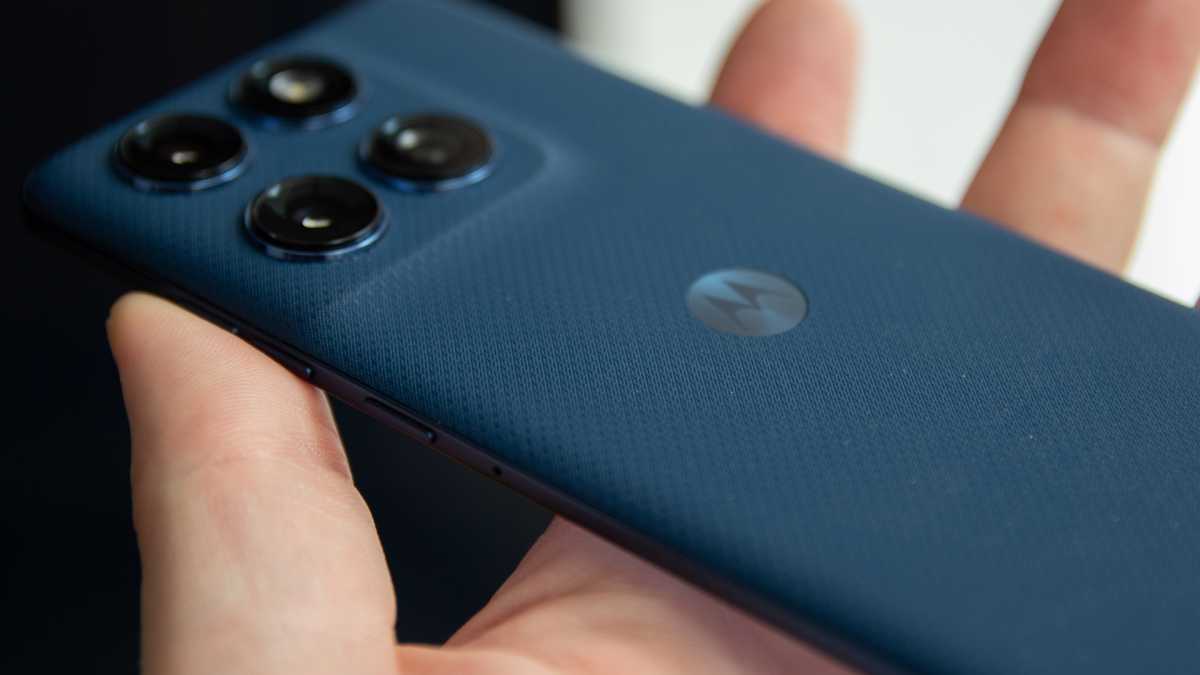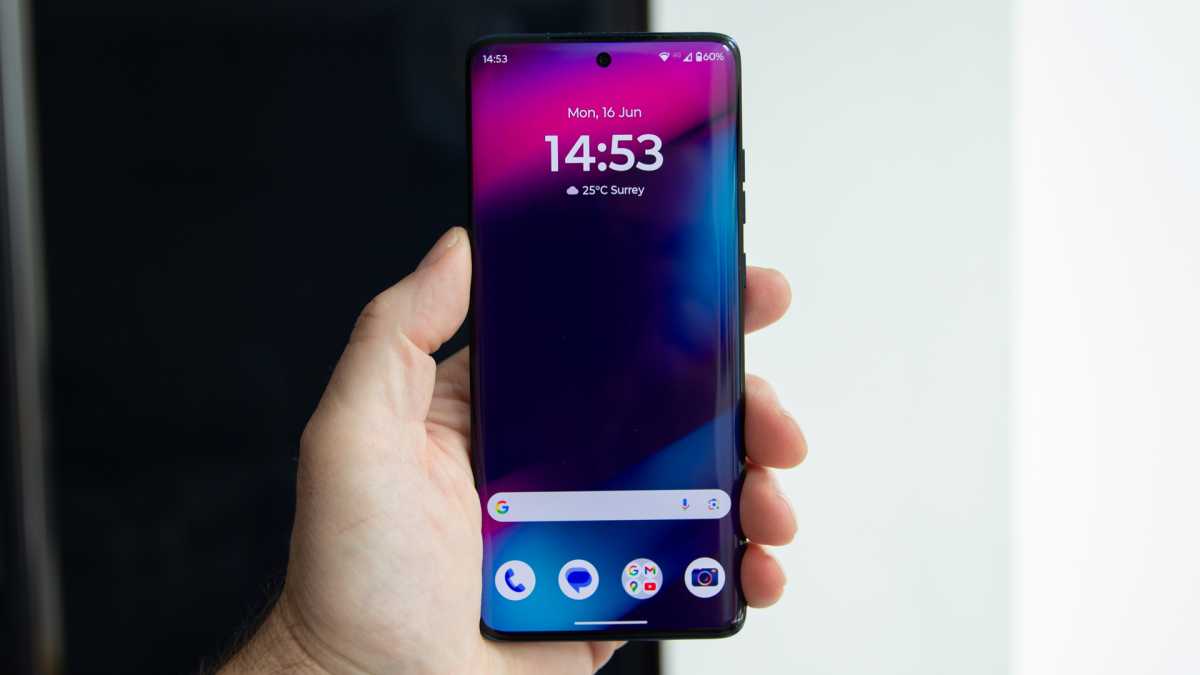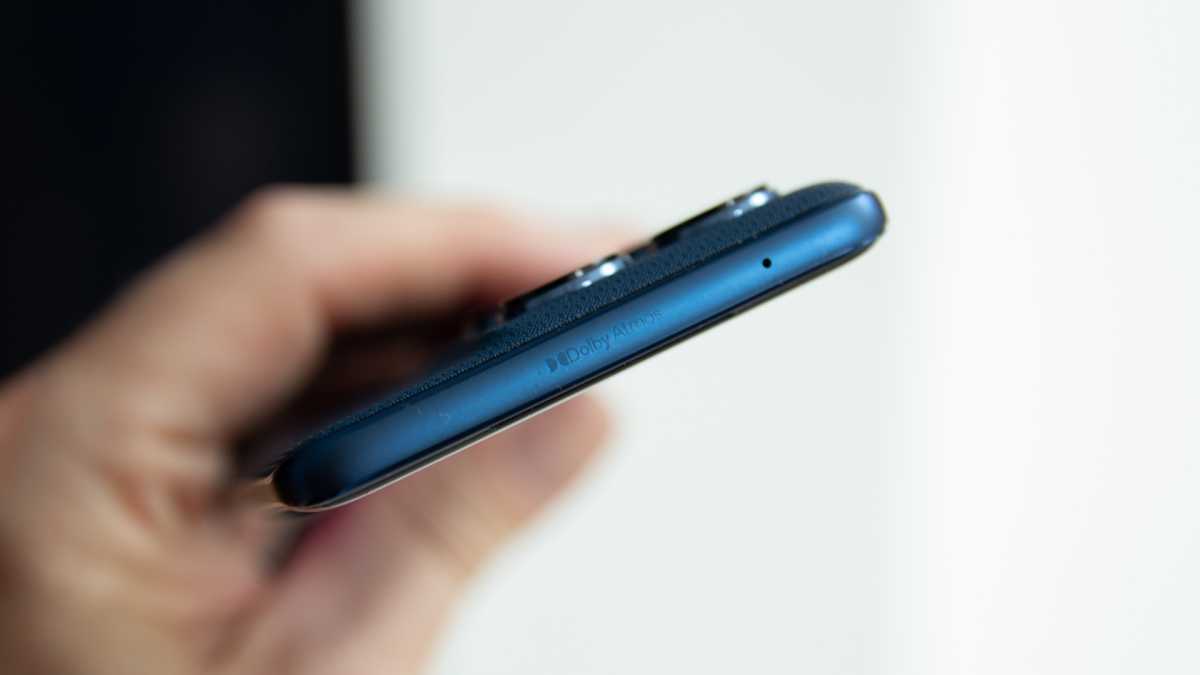Expert’s Rating
Pros
- Gorgeous canvas finish
- Top-class water and dust resistance
- 68W fast charging
- Impressive display
- Intuitive Android software experience
Cons
- HDR display issues
- Patchy Wi-Fi performance
- Only four years of updates
- Underwhelming AI features
- Hit-and-miss cameras
Our Verdict
The Edge 60 is a slight upgrade on the Edge 60 Fusion, sacrificing the good value proposition for a zoom lens and a few other minor changes. But while the day-to-day experience is a noticeable upgrade, there isn’t enough to justify the extra expense or ultimately make the phone worth buying.
Price When Reviewed
This value will show the geolocated pricing text for product undefined
Best Pricing Today
The Motorola Edge family has a problem: the Edge 60 Fusion, Edge 60, and Edge 60 Pro all offer a very similar proposition.
These three devices all look the same and share many of the same specs, yet are available at three distinct price points. While the Edge 60 Fusion costs £299.99, the Edge 60 is £379.99, and the Edge 60 Pro is £599.99.
The focus of this review is the middle phone in the lineup. Compared to the Fusion, the extra £80 only really gets you a better camera.
Is this a mid-range phone that’s worth buying, or are there better options out there? Here’s my full review.
Design & Build
- Faux canvas or leather finishes
- Plastic frame
- IP68/IP69 protection
Across a number of generations, Motorola has been pushing its partnership with Pantone, resulting in some of the most interesting colors around.
While most brands offer a safe selection of black and silver hues, Motorola has chosen Pantone Gibraltar Sea (pictured here, your only color option) for the Edge 60. This is paired with a canvas finish, so there’s a soft-touch effect.
Chris Hall / Foundry
Many of Motorola’s phones have used faux leather on the back, but the canvas feel is something new, with a slightly coarser texture that offers plenty of grip. It’s a move that might make you think twice about putting a cover on your phone, because the Edge 60 looks and feels great without showing fingerprint smudges.
The Moto 60 Edge comes with IP68 water and dust resistance, which is pretty standard on flagship phones but less common at this price point. It ensures there’s full protection against dust and submersion in fresh water of up to 1.5m for up to 30 minutes. A separate IP69 certification means the phone has additional protection against water jets, which is something that remains rare.

Chris Hall / Foundry
Both the front glass and rear canvas curve at the sides, making the phone feel narrower than it actually is. Compared to regular square-edged phones, it gives the phone a slimmer side profile.
At 7.9mm and 179g, it’s an impressively slender device, albeit not quite on the same level as the Galaxy S25 Edge.
Screen & Speakers
- 6.67-inch pOLED display
- 120Hz refresh rate
- Stereo speakers with Dolby Atmos
There’s a 6.67-inch display on the front of the Edge 60, and as far as I can tell, it’s the exact same screen as you have in the Edge 60 Fusion.
That’s no bad thing, as it’s a great display. It packs in a 2712 x 1200-pixel resolution, which results in 446 pixels per inch. That’s nice and detailed.

Chris Hall / Foundry
It’s a 120Hz display, designed to keep your scrolling nice and smooth, while it’s also equipped with a 4500 nits peak brightness. That’s incredibly bright, but this isn’t about retina-searing brightness all the time; it’s about making HDR highlights look great.
There seems to be a slight issue here, however, as I didn’t find any support for HDR in common streaming services, and Google Photos doesn’t show the HDR pop that you get from other phones. I compared photos I’d taken on the Edge 60 with those images on the Pixel 9 Pro XL in Google Photos, and the Pixel had brighter highlights on every photo.
That seems to be because it’s not displaying Ultra HDR images on the Moto phone, so compared to the Pixel, the photos look a little flat when viewed.
As far as I can tell, it’s the exact same screen as you have in the Edge 60 Fusion. That’s no bad thing, as it’s a great display
There’s plenty of vibrancy and color in this display, with ‘Natural’, ‘Radiant’, and ‘Vivid’ options to change the tonality. I was happy with ‘Vivid’, but if you find that it’s too saturated, it’s easy enough to change.
In my opinion, the curved display is another downside. Curved edges might look good from an aesthetic point of view, but it means that the sides of the display aren’t as touch-responsive as the center. The borderless visuals look great until you have to tap on an icon in a game that’s not on the flat part of the screen, and it doesn’t respond as quickly.
If you’re not a hardcore gamer, that won’t matter, but if you’re playing a lot of titles such as Call of Duty: Mobile or PUBG Mobile, you might find the design to be problematic.
The stereo speakers, however, offer impressive performance. They have plenty of volume with decent bass. They support Dolby Atmos, but don’t expect the kind of immersive sound you’d get with a home cinema setup. For ad hoc videos at high volume, however, these speakers are pretty good.
There’s a fingerprint sensor in the display, which I found to be quick to register fingers and quick to unlock the phone, too. There’s also the option to use face unlock to get into the device, which is really convenient (and fast), although it isn’t as secure as fingerprint or PIN entry.

Chris Hall / Foundry
Specs & Performance
- MediaTek Dimensity 7300 chipset
- 12GB of RAM
- 512GB of storage
The Edge 60 and Edge 60 Fusion share the same core hardware. Both run on the Dimensity 7300 from MediaTek, a mid-range chipset that’s designed for exactly this type of device.
But before you baulk at that, in day-to-day use, the Edge 60 is perfectly smooth. One advantage compared to the Fusion is the extra 4GB of RAM (now 12GB), while the storage is boosted from 256- to 512GB. The latter can be expanded up to 1TB via a Micro-SD card.
In day-to-day